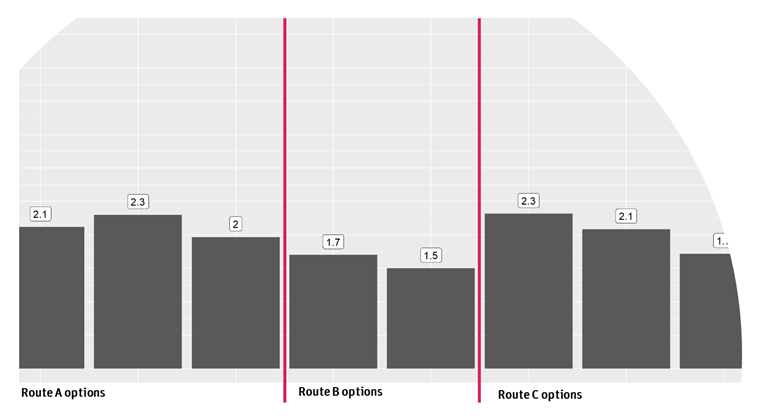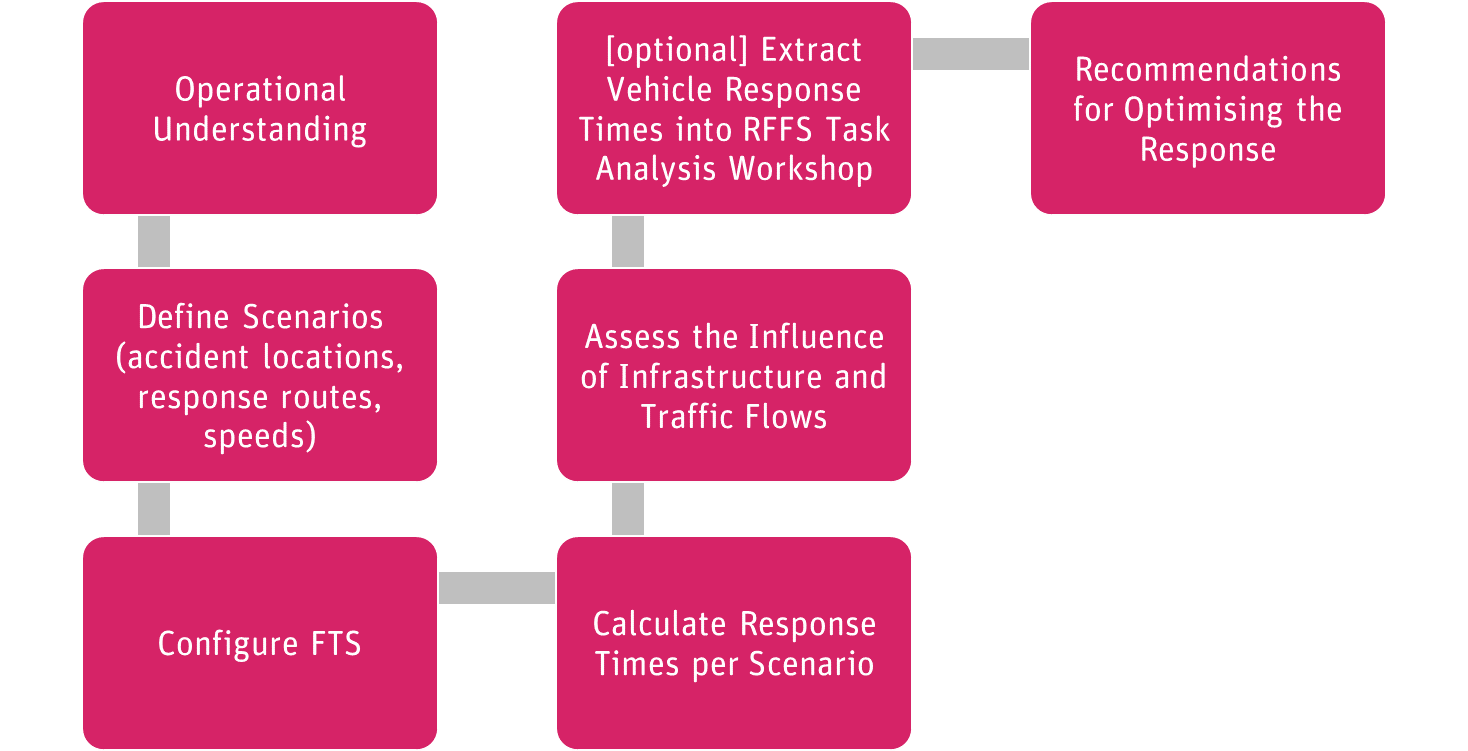Recently Think led a series of workshops with the Rescue and Fire Fighting Service (RFFS) of a major UK airport as part of a project requiring the development of new emergency response procedures. The work required a good understanding of airport emergency response planning, applicable regulations and an understanding of what the considerations may be for airports wanting to optimise their safety management systems and aerodrome emergency response plans.
Here we share a few thoughts on assessing the impact of airfield changes on airport RFFS response times, discussing a few considerations for optimising the response and positively contributing to airport safety.
What is the required response time?
The principle objective of RFFS is to save lives. According to the UK CAA the most important factors in achieving this principle objective are; effectiveness of equipment, training received by personnel and the speed that these can be used. International and national regulations are pretty much aligned on the requirements for response times. The International civil aviation organisation (ICAO) sets out the following in the Airport Services Manual Part 1 Rescue and Fire Fighting:

The UK CAA provides clear text with regards to RFFS, they consider response time to be “the time between the initial call to the rescue and fire fighting service, and the time when the first responding vehicle(s) is (are) in position to apply foam at a rate of at least 50% of the discharge rate specified ….”. This definition provides us with a precise start and stop and in turn this allows for direct comparisons and assessments to be made.
How can the design of an aerodrome support response times?
Airport operators are responsible for ensuring that the RFFS response vehicles can reach accident sites. This site may be within the aerodrome’s licensed boundary, within the general aerodrome boundary but outside the licensed site area or outside the aerodrome boundary.
There are various ways that the design of the airfield can help or hinder RFFS response. One specific consideration is the routes that response vehicles will take to respond to an incident on the runway/s or other critical areas. RFFS personnel at individual airports will be experts in the aerodrome layout and the ways to optimise the route so they can respond in the quickest time possible. This will mean they adjust the response route depending on the time of day and traffic conditions. They will also have a good understanding of how conditions vary across different parts of the aerodrome throughout the day. Additionally, RFFS response vehicles will often attempt to take different routes to an incident to provide an additional layer of resilience if something were to cause a route-specific delay.
The number of tight turns along a route has a strong influence on the overall response time, this is because the response vehicle must decelerate and then regain speed. Unsurprising considering that a Panther airport crash tender can hold 14,000 litres of water. The overall distance to be covered also plays a role. In some cases, less direct but straighter routes provide a quicker response time than a route which is more direct but involves tight turns.
In an analysis Think conducted using bespoke modelling and simulations, we found that routes which aim to reduce the number of tight turns could improve response time by nearly 50 seconds, in the best case. Such route optimisation is second nature to an RFFS response driver but may need to be made more explicit within airport development projects and the associated safety and business cases.

Figure Sample Response Time Analysis Results
Going further, curved routes onto the runway have been deployed at some airports to improve overall response times. The figure below shows curved response roads at Muscat international airport which could be used as access roads for RFFS response.
The use of curve roads would decrease the level of deceleration required, providing improvements in overall response times. To further optimise the emergency response, such roads can be protected by including stop bars to prevent other vehicles crossing over or using these roads during an emergency response. If stop bars were linked to the RFFS crash alarm then they could be lit as soon as the alarms sound, ensuring such routes are free and available for use immediately. An example of just one measure that airport operators could take to help to improve overall emergency response.
Muscat international Airport OMAN [Credit Google Maps Imagery CNES/Airbus Maxar Technologies Map Data 2020]
How we can help….
To evaluate which design changes can best support the operation – or which should be considered alongside a proposed change to an operation – the airport operators can conduct a series of fast time simulations coupled with activities to engage with RFFS teams. This will provide an improved understanding, and evidence for, how response times may be impacted. This, in turn, can help to:
-
- Determine if any adjustments are required to planned infrastructure to enable response times to be met;
- Determine if any additional RFFS facilities are required to ensure emergency response to the runways and other critical infrastructure;
- To help to provide the required safety evidences to feed a safety case for the change;
- To help to support a business case if additional infrastructure or facilities are required and attract increased spends.
The Think process for assessing the effect of airport infrastructural or procedural changes on emergency response times commences with gaining a clear understanding of the current or future operations of the airport. This would include any local criteria or objectives for responding across the airport. Following this, a set of scenarios are defined, this may be based around credible worst-case assessments considering the locations of accidents or built around wanting to select the most optimal route/placement of infrastructure from a selection of designs.
For each scenario, a fast time simulation exercise is developed and run to provide an assessment of the response times of emergency vehicles for each. We then apply our knowledge of airport operations to assess the findings, looking to reveal any areas of the infrastructure or operation that may be restricting the emergency response and to determine how this can be optimised. This may reveal some of the following key findings:
-
- The optimal placement of response roads onto the runway;
- What small changes to the airfield roads or taxiways should be considered from an emergency response perspective and fed back to designers;
- The influence of any potential traffic hotspots.
A high-level overview of our process is provided below.

Think’s step by step process for assessing airport vehicle emergency response times
Following this the vehicle response time findings are extracted and fed back as recommendations. Additionally, Think can continue to work with RFFS teams, to ensure that the total response time is considered, including looking at how the workload of RFFS staff may be influenced by any proposed concepts, how the time to alert RFFS to an accident/incident in the first instance can be improved and by supporting more detailed CAP 1150 Task and Resource Analysis.
If you would like to have a more detailed discussion about any aspect of this article, please get in touch.

Author: Rory Hedman, ATM Consultant


Recent Comments